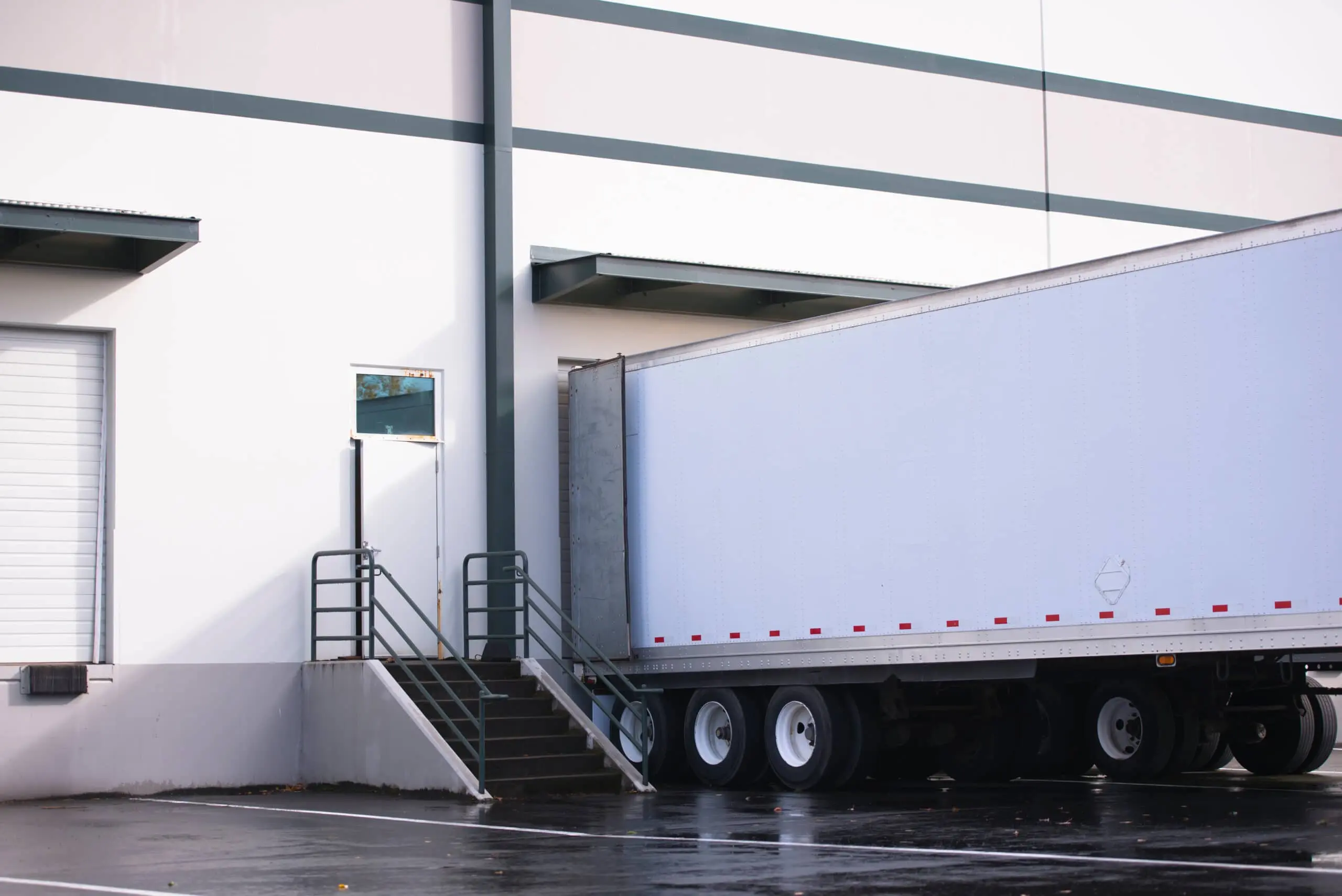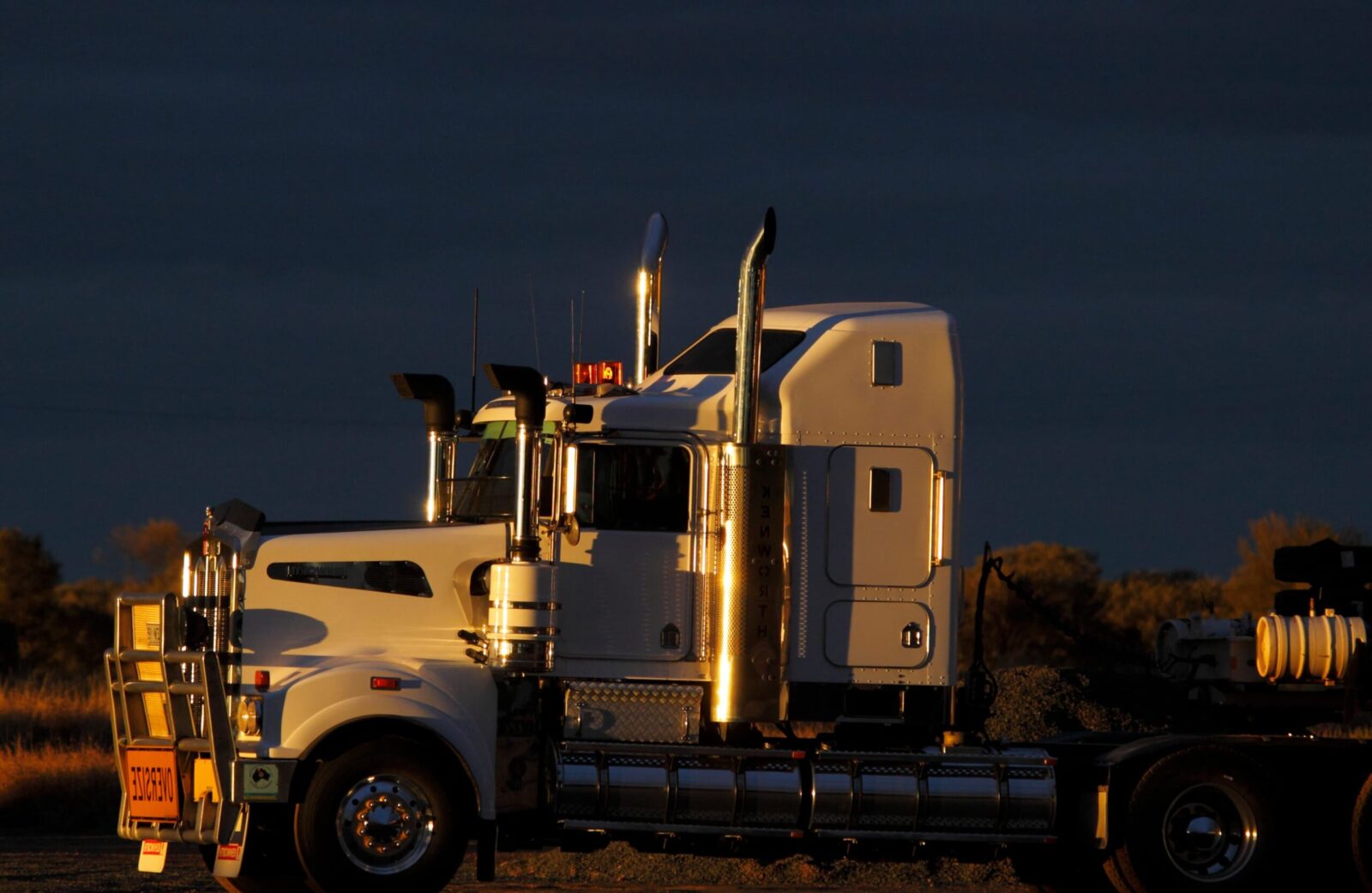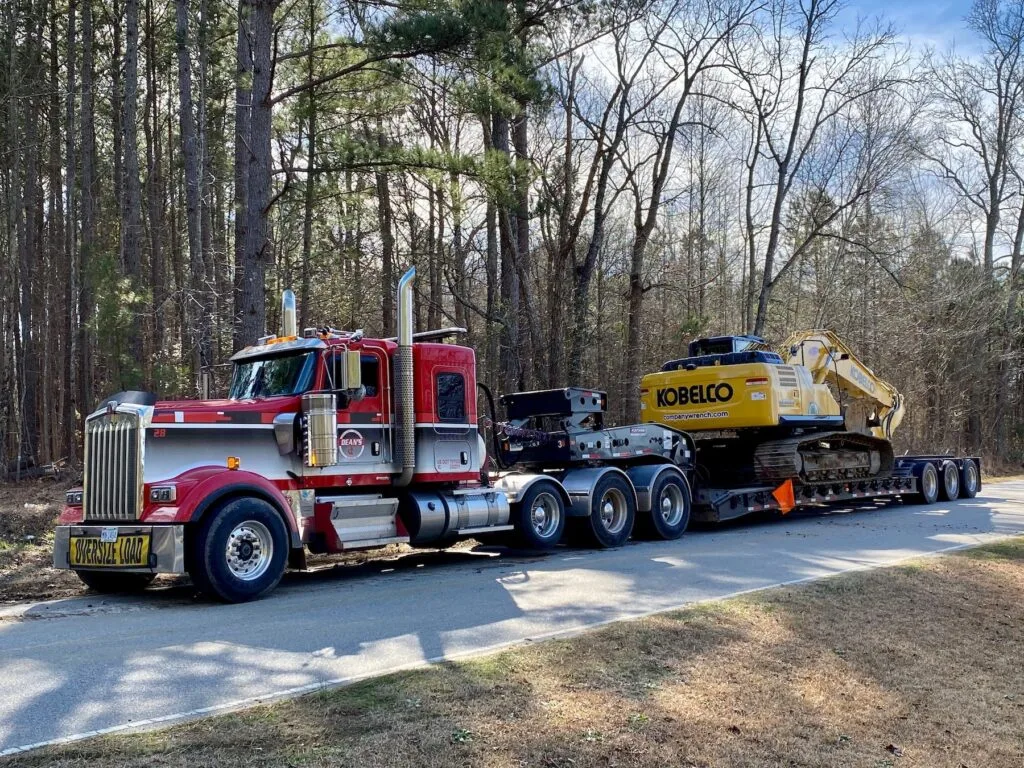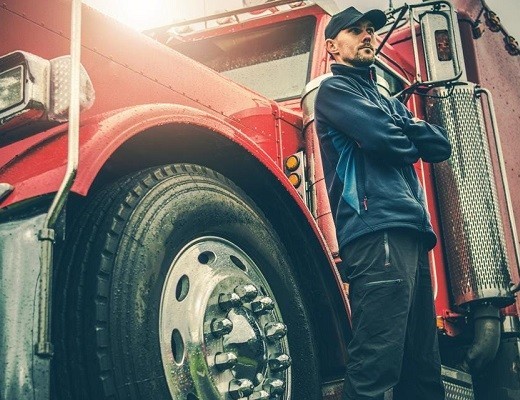

How to Start a Diesel Truck in Cold Weather: Top Tips
It’s bad enough that it’s a cold and miserable day – now your diesel truck won’t start! Thankfully, with some know-how and preparation, you can minimize the downtime and get it running again. Here are a few helpful tips on how to start a cold diesel engine to make sure you are able to get on the road to deliver your loads sooner and earn money for your business.
-
Why a Diesel Truck Won’t Start in Cold Weather
- How to Start a Diesel Truck in Cold Weather
-
Heating Methods When You Have Trouble Starting a Diesel Truck
- Glow Plugs
- Block Heater
- Intake Heater
- Tips to Avoid Trouble Starting Diesel Engine in Cold Weather
- Diesel Truck Cold Weather Start Help
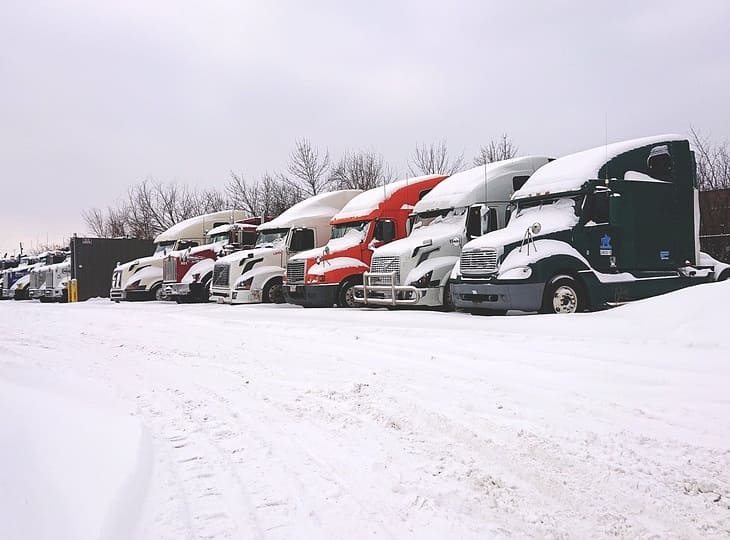
Why a Diesel Truck Won’t Start in Cold Weather
The key difference between diesel and gasoline engines makes it more challenging to start the diesel on cold days. Unlike gasoline engines, diesel engines are ignited by air compression in the cylinder. Specifically, the air must be compressed to one-sixteenth of the original volume, which will raise the temperature of the fuel to 400 degrees so it can ignite when injected into the chamber. Not surprisingly, colder temperatures impede this process, which is why a diesel truck won’t always start in cold weather. Gasoline engines, of course, have spark plugs to ignite gas. What temp is too cold for a diesel engine? At a temperature of 15 degrees Fahrenheit or -9.5 degrees Celsius, the diesel fuel in your fuel tank will solidify, and you will have difficulty starting your engine.
How to Start a Diesel Truck in Cold Weather
The key in terms of how to start a diesel truck in cold weather and provide cold cranking amps to start your diesel engine is being able to heat up the engine in order for the fuel to ignite. There are a number of things you can do to ensure that you can quickly get your diesel engine to temperature and save yourself time and aggravation. We will start with the three main engine heating methods, but also include a list of things to keep in mind — tricks we have been told about or have discovered during our years in business helping owner-operators of trucking businesses.
Heating Methods When You Have Trouble Starting a Diesel Truck
There are three main methods to heat it up when it’s too cold for a diesel engine and you are having trouble starting your diesel truck in the cold: glow plugs, block heater, and intake heater. It is smart to know what hardware you have, and make sure you have alternatives if you need to make a long road trip in cold weather.
Glow Plugs
Powered through the truck battery, glow plugs look and act like the spark plugs of a gas engine, though they work a little differently. Turn the key to run but not start the engine. Glow plugs can take a few seconds to a full minute to get to temperature, at which point, the “Glow Plug Wait to Start” indicator light will turn off. If the ignition still takes more than 30 seconds to turn over, turn your key to run again until you see the indicator light again. Then let the glow plugs warm up again before trying again.
Block Heater
This is a more involved and time-consuming method — and usually works in conjunction with glow plugs. It works by heating up the truck’s engine block and coolant. The plug for the block heater looks like an extension cord toward the engine’s bottom, usually around the battery, headlight area, or grill. Plug the block heater into an outlet plug and run the plug through the grill of the truck. You may need an extension cord. Note that some trucks allow you to run the plug through the front of the truck. Keep everything plugged in for at least two to three hours before starting the truck — longer (six hours to overnight) if temperatures are below 10 degrees.
Intake Heater
The intake heater method is the quickest and does not give off smoke. Residing in the intake manifold, the intake heater heats the air that is sucked into the cylinders. Like glow plugs, it is powered by the truck battery. Turn the key in the ignition and wait for the glow plugs to warm, then start the engine. The intake heater will do its work, warming the air going into the combustion chamber so that the engine temperature rises faster.
Tips to Avoid Trouble Starting Diesel Engine in Cold Weather
As with any other vehicle, proper maintenance and trip planning will help minimize trouble when you start your diesel truck in cold weather. Know your truck and what’s in it, and prepare in advance for long trips in cold temperatures. The more preparation work you do before your trip, the sooner it will be to warm up and hit the road.
- Know what’s in the tank. When the diesel truck was parked, was it filled with #1 or #2 diesel fuel or both? #1 is less viscous and has a higher concentration of cetane, making it more volatile and thus, easier to ignite. It also tends to contain additives. #2 diesel fuel is more viscous and less volatile, making it more fuel-efficient and better for warmer temperatures. Using #1 fuel during the winter may feel like more of a hit to the pocketbook, but may allow your truck to warm up and get on the road faster.
- Consider winter fuel additives. These additives lower the “Cold Filter Plugging Point” to prevent the fuel from freezing and gelling in the engine and tank. The key is to add the additives at slightly warmer temperatures — ideally right after filling with #1 diesel — so that the fuel and additives can mix properly. Make sure that you choose an additive with a rating of at least 10 degrees lower than the cold temperature you expect to experience. Most importantly, do not add additives to fuel that has already been “winterized”, because different additives can be incompatible and undo benefits.
- Regularly change the oil. Fresh, high-grade oil keeps parts lubricated and aligned, but also has an effect on ignition time. Older, thicker oil actually makes an engine two or three times harder to start at 0 degrees and lower. By keeping up with the oil changes on your diesel truck, you will benefit from improved performance throughout the year, not just in the wintertime.
- Warm up the oil. You can heat the oil within the crankcase with a heated dipstick that plugs into an outlet. If you are careful and desperate, you could, as some drivers have reported, plug in a hair dryer with a long extension cord, put the nozzle into the air inlet duct, and gently warm up.
- Have a battery just for glow plugs. Glow plugs are powered by your truck’s battery, and the amount used is not insignificant. Additionally, a battery is worse at holding a charge in cold temperatures; it may have full power at 75 degrees, but less than 50% at 0 degrees. Allowing the glow plugs to charge from a different battery will prevent you from draining the main battery while ensuring that the glow plugs are sufficiently charged. If you have enough room under the hood, you could consider getting a greater-capacity battery instead.
- Alternatively, get a battery warmer. The two most popular battery warmers — the “hot plate” and the “electric blanket” — both plug into a 110-volt socket. The “hot plate” is like a baking sheet you put under your battery and heats it. The “electric blanket” can be a lifesaver in super cold temperatures, using more current than the “hot plate”. As its name suggests, this warmer is wrapped around the battery.
- Keep your fuel tank topped up. When your fuel tank is full, you help prevent condensation buildup and keep your fuel from freezing. Also, change your fuel filters regularly.
- Keep your diesel truck warm when you want to start a diesel truck in cold weather. Allowing your diesel truck to rest in a heated garage can save you a lot of headaches when you need to prepare for a cold winter road trip. The same applies to any equipment you will use to help heat up your diesel engine.
- Give your diesel engine enough time to warm up. This is a situation in which taking the time to make sure your engine heats up properly is much better than trying to rush the process and potentially creating future problems.
- Stay away from “engine-starting fluids”. The containers may carry instructions, but it can be very difficult to measure safe proportions, and the ether contained in “engine-starting fluids” ignites at much lower temperatures. The last thing you want is to start an explosion or fire, which could result in serious damage to your diesel truck — and you, of course. If you are hell-bent on using an “engine-starting fluid”, at least have the starting-fluid injection kit installed, and stay far away from the spray can versions.
If all else fails, get professional help. Seek the professional advice and service of a certified diesel mechanic to find the root cause of your cold temperature problem. A diesel professional can help make sure that your attempts to start up your truck don’t inadvertently backfire and cause damage to your most important asset — as well as its operator! Remember that in the long run, it is always better to pay for a proper diagnosis and recommendations than to use the try-and-fail method. Always benefit from the experience and industry know-how of a professional when you can. Your time is better spent driving!
Diesel Truck Cold Weather Start Help
This article on how to start your diesel truck in cold weather is brought to you by Logity Dispatch Freight Dispatch Service as one of many ways we help truckers and trucking companies to make more money — and keep it. That’s why we are happy to provide guidance articles like this whenever we can. No matter what your business model is, everyone can benefit from helpful information to keep costs down and vehicles running optimally.
Since 2015, we’ve been helping owner-operators and fleets search for the best paying loads and negotiating rates — for less than the cost of hiring an in-house dispatcher — and offering comprehensive services such as billing, trucking document management, renewals, compliance, and more. We also believe that it’s important for trucking business owners to keep their autonomy. You know your business best, so we don’t force anything on you. You pick the services you’d like — or you can opt for the full package. All we want to do is make sure that you spend more time growing your business by driving loads and less time on the administrative stuff that just bogs you down.
Got a question about our services or a topic for a future article? Don’t hesitate to contact us. We’d be delighted to chat about how we can help your trucking business.

